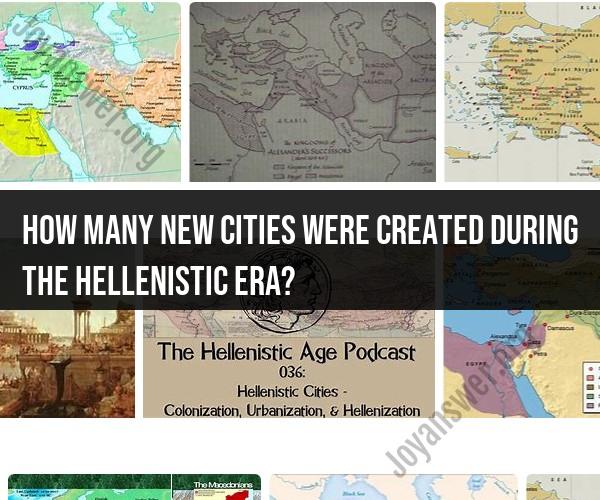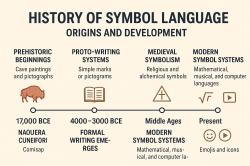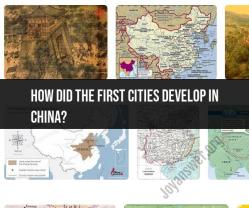How many new cities were created during the Hellenistic era?
It is challenging to provide an exact number of new cities created during the Hellenistic era because the era spanned several centuries and encompassed numerous regions and dynasties. The Hellenistic era, which began with the conquests of Alexander the Great in the 4th century BCE and continued until the Roman conquest of Egypt in 30 BCE, saw the founding of many new cities and the expansion or transformation of existing ones. Some of these cities were established by Alexander himself, while others were founded by his successors (the Diadochi) or by various Hellenistic rulers and dynasties that followed.
Several well-known cities from the Hellenistic era include Alexandria in Egypt, Antioch in Syria, Pergamon in Asia Minor, and Seleucia in Mesopotamia, among others. These cities were not only centers of political power but also hubs of culture, learning, and trade.
The foundation of new cities was a common practice during the Hellenistic era, and these cities often bore the names of their founders or ruling dynasties. Many of them adopted elements of Greek culture, including architectural styles, language, and institutions, while also incorporating local traditions and customs.
The exact number of new cities founded during the Hellenistic era would require extensive historical research, and even then, it might be challenging to provide an accurate count due to the passage of time and the lack of comprehensive historical records. Nevertheless, it is clear that the Hellenistic period witnessed significant urbanization and the establishment of numerous cities that played important roles in the history of the era.
City Formation During the Hellenistic Era: Unveiling the Count
The Hellenistic era (323-31 BC) was a period of significant urban expansion in the Mediterranean world. Alexander the Great's conquests led to the founding of many new cities, and existing cities grew in size and importance.
The exact number of cities founded during the Hellenistic era is difficult to determine, but estimates range from 300 to 700. Many of these cities were located in the eastern Mediterranean, in regions such as Anatolia, Syria, and Egypt. However, new cities were also founded in Greece, Italy, and North Africa.
The Hellenistic city was a typically Greek-style urban center, with a grid plan, a central agora, and a variety of public buildings. However, Hellenistic cities were also influenced by the cultures of the conquered peoples. For example, many Hellenistic cities had temples and other religious buildings dedicated to local deities.
Urban Expansion in the Hellenistic World: Quantifying New Cities
The growth of cities during the Hellenistic era was driven by a number of factors, including:
- Trade: The Hellenistic era was a period of flourishing trade, and cities served as important centers of commerce.
- Administration: Hellenistic kingdoms needed cities to serve as administrative centers, where taxes could be collected and laws could be enforced.
- Military: Cities were also important military strongholds.
The growth of cities during the Hellenistic era had a number of important consequences. It led to the spread of Greek culture and language throughout the Mediterranean world. It also led to the development of new technologies and ideas, as people from different cultures came together in cities.
Historical Development: Examining the Emergence of Cities in the Hellenistic Period
The emergence of cities in the Hellenistic period was a complex process that was influenced by a variety of factors. One important factor was the legacy of the Greek polis. The Greek polis was a self-governing city-state that was a central feature of Greek civilization. Hellenistic cities were often built on the ruins of Greek poleis, and they inherited many of the political and social institutions of the polis.
Another important factor in the emergence of Hellenistic cities was the influence of Eastern civilizations, such as the Persian and Egyptian empires. These empires had a long tradition of urban development, and Hellenistic cities were often influenced by Eastern architectural styles and urban planning principles.
The Hellenistic city was a unique blend of Greek and Eastern elements. It was a center of trade, administration, and military power. It was also a place where different cultures came together and new ideas were born.
Here are some examples of new cities founded during the Hellenistic era:
- Alexandria (Egypt)
- Antioch (Syria)
- Pergamon (Anatolia)
- Seleucia on the Tigris (Mesopotamia)
- Dura-Europos (Mesopotamia)
- Bactria (Central Asia)
- Ai-Khanoum (Central Asia)
The emergence of cities in the Hellenistic era was a landmark event in world history. It marked the beginning of a new era of urbanism and urbanization that continues to this day.













